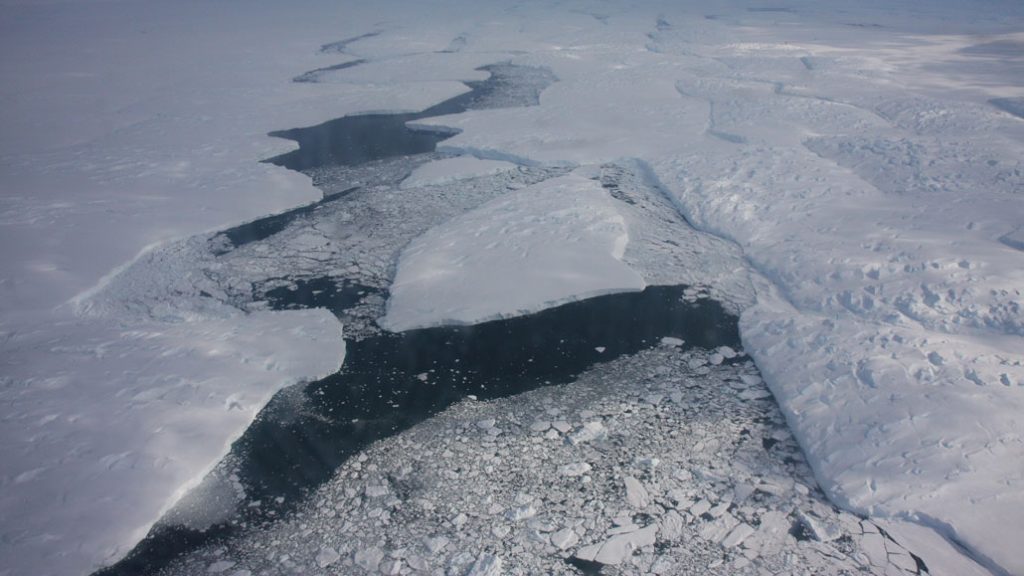The fate of the Antarctic ice sheet and its implications for global sea-level rise are subjects of intense scientific scrutiny. Projections for the next three centuries, based on the ISMIP6 model ensemble (Seroussi et al., 2024), paint a concerning picture of continued ice loss and substantial sea-level contributions. These projections underscore the urgency of understanding the complex dynamics driving ice sheet retreat and the potential for mitigating its effects. A key area of concern is the Amundsen Sea Embayment, home to glaciers like Thwaites, which are experiencing rapid retreat and contribute significantly to sea-level rise. The interaction of warm ocean water with these glaciers, specifically the intrusion of Circumpolar Deep Water onto the continental shelf and its subsequent melting of ice shelves from below (Wåhlin et al., 2021), is a primary driver of this instability (Joughin et al., 2014; Joughin et al., 2002). This dynamic highlights the need for innovative strategies to protect these vulnerable ice shelves and potentially slow down the rate of ice loss.
The concept of geoengineering interventions to mitigate ice sheet collapse has gained traction in recent years (Moore et al., 2018). One proposed approach involves the construction of seabed-anchored curtains or underwater walls to restrict the influx of warm water towards the grounding lines of crucial glaciers, particularly in the Amundsen Sea (Wolovick et al., 2023; Keefer et al., 2023; Wolovick and Moore, 2018). These structures, strategically placed at key inflow points, aim to disrupt the circulation patterns that deliver warm, dense water to the ice shelf cavities, thus slowing down basal melt and potentially stabilizing the glaciers. The feasibility and effectiveness of such interventions, however, require thorough investigation, considering the complex oceanographic and glaciological processes at play. Modeling studies have explored the potential benefits of these interventions, suggesting they could significantly reduce or even reverse ice loss in targeted areas (Wolovick et al., 2023).
While the potential for targeted geoengineering to mitigate sea-level rise presents a glimmer of hope, it’s essential to acknowledge the potential unintended consequences and broader impacts of such large-scale interventions (Gürses et al., 2019). One study modeled the effects of a submarine wall in the Amundsen Sea and found that while it could potentially protect the targeted glaciers, it could also inadvertently increase melting in neighboring ice shelves due to altered circulation patterns (Gürses et al., 2019). This underscores the critical need for comprehensive assessments of potential side effects before implementing any large-scale geoengineering projects. The intricate interplay between ocean currents, ice shelf dynamics, and surrounding ecosystems necessitates cautious and well-informed decision-making.
Beyond targeted interventions, global efforts to curb greenhouse gas emissions remain paramount in addressing the long-term threat of sea-level rise (DeConto et al., 2021). The Paris Climate Agreement sets ambitious targets for emissions reductions, but even if these targets are met, significant sea-level rise is still projected due to the long response time of the ice sheets. This further emphasizes the importance of exploring a range of mitigation and adaptation strategies, including geoengineering approaches, to manage the risks associated with future sea-level rise. The challenge lies in balancing the potential benefits of interventions with the potential for unintended consequences and ensuring that these actions are undertaken responsibly and ethically.
The changing ocean dynamics in the Southern Ocean also contribute to the complex picture of Antarctic ice sheet stability. The Antarctic Circumpolar Current (ACC), a major ocean current encircling Antarctica, plays a crucial role in regulating the exchange of heat and salt between the Southern Ocean and the rest of the global ocean. Recent research has documented a multidecadal poleward shift of the southern boundary of the ACC off East Antarctica (Yamazaki et al., 2021). This shift potentially impacts the distribution of warm water masses in the region, which could have implications for ice sheet stability, particularly in East Antarctica. Understanding the mechanisms driving this shift and its potential consequences for ice-ocean interactions is vital for refining projections of future ice loss and sea-level rise.
In conclusion, the future of the Antarctic ice sheet and its contribution to sea-level rise remains a significant concern. While projections indicate substantial ice loss over the coming centuries, driven by the complex interplay of warming ocean temperatures, changing circulation patterns, and the inherent instability of marine ice sheets, research into innovative mitigation strategies offers a potential avenue for slowing down this process. Geoengineering interventions, such as seabed-anchored curtains, hold promise, but require thorough investigation to ensure their effectiveness and minimize potential unintended consequences. Ultimately, a comprehensive approach involving global emissions reductions, targeted interventions, and ongoing research into the complex dynamics of the Antarctic ice sheet is crucial for managing the long-term risks associated with rising sea levels. The challenge lies in integrating these diverse approaches within a framework of responsible and informed decision-making, acknowledging the complex interplay of scientific, ethical, and societal considerations.


